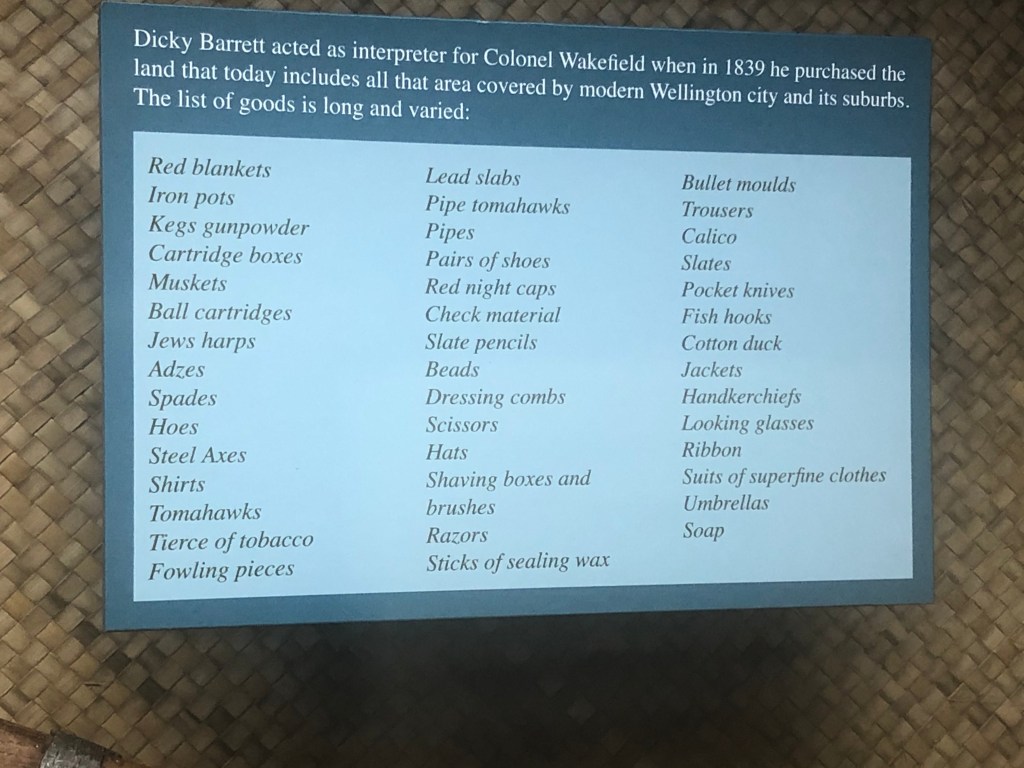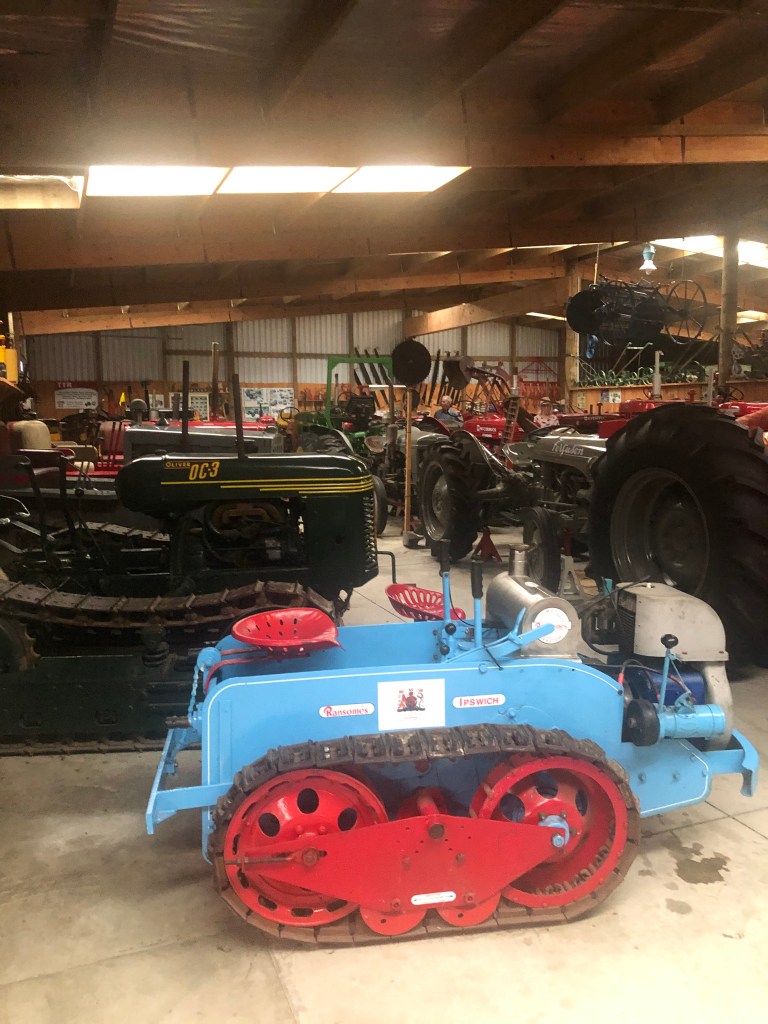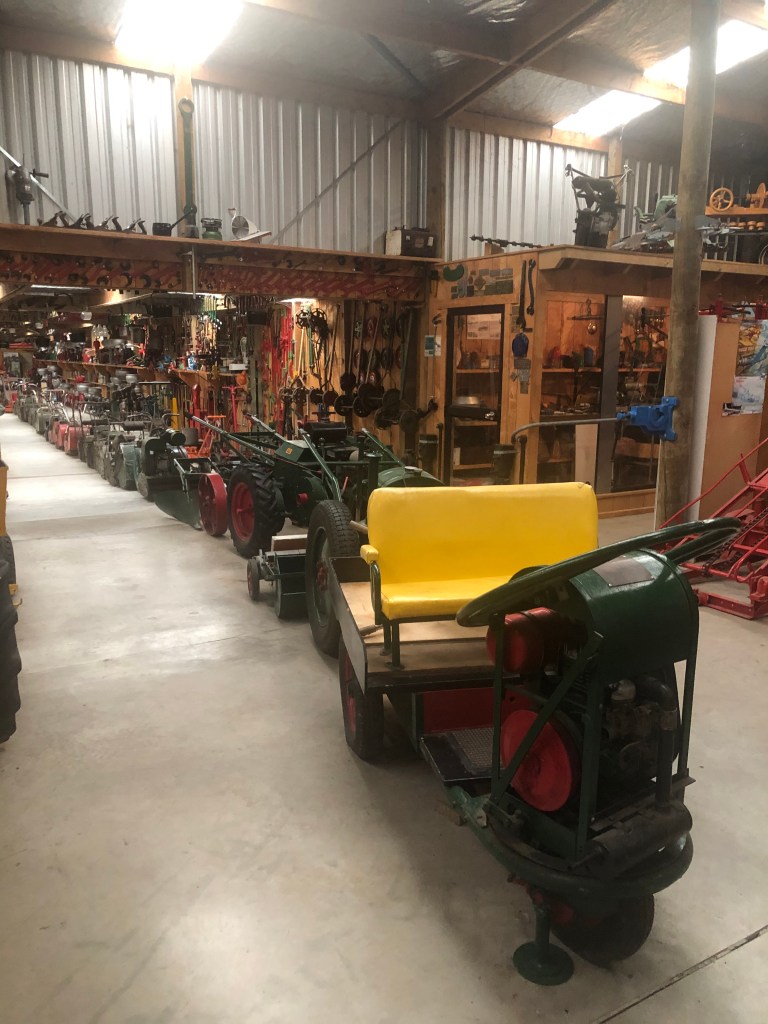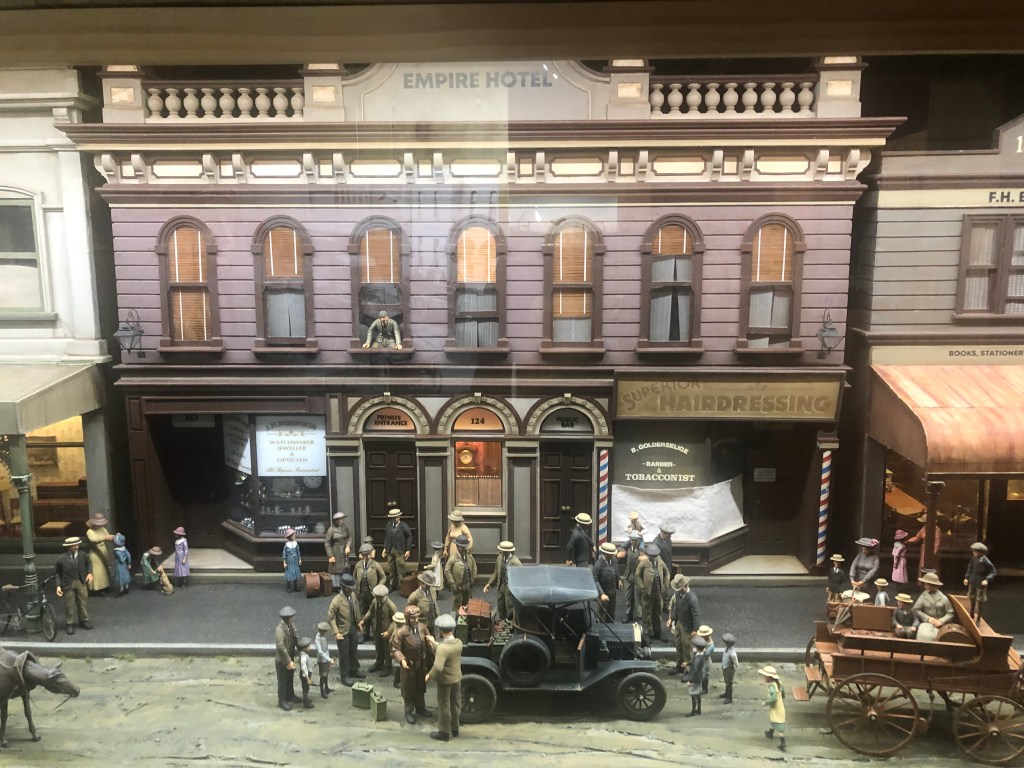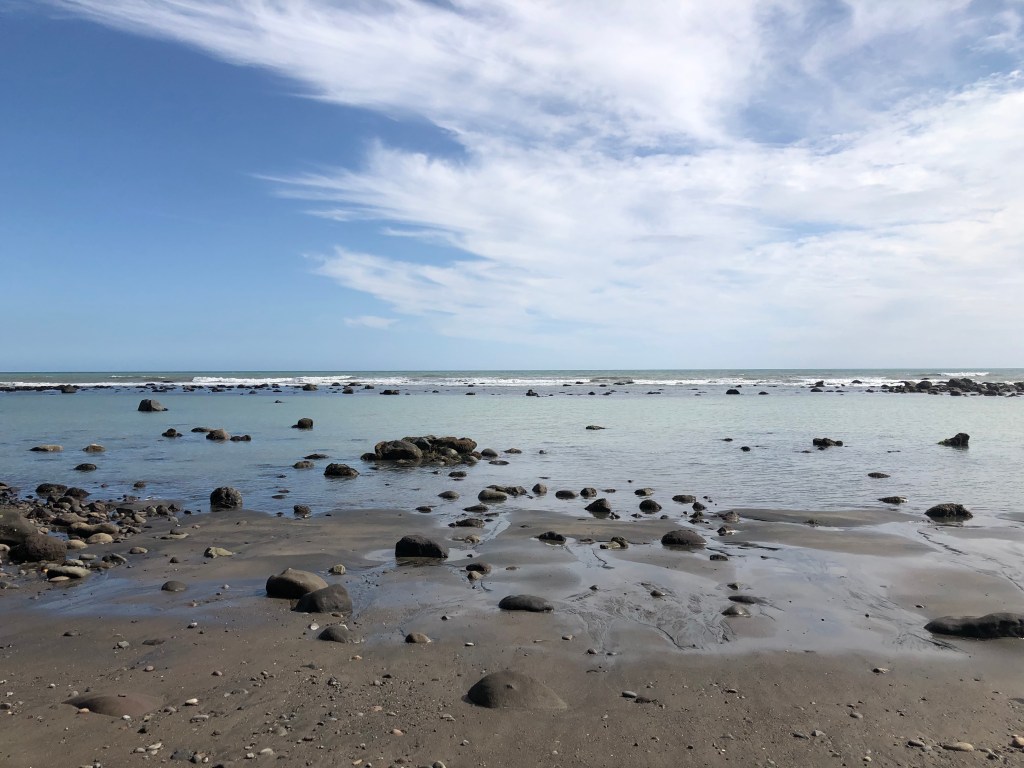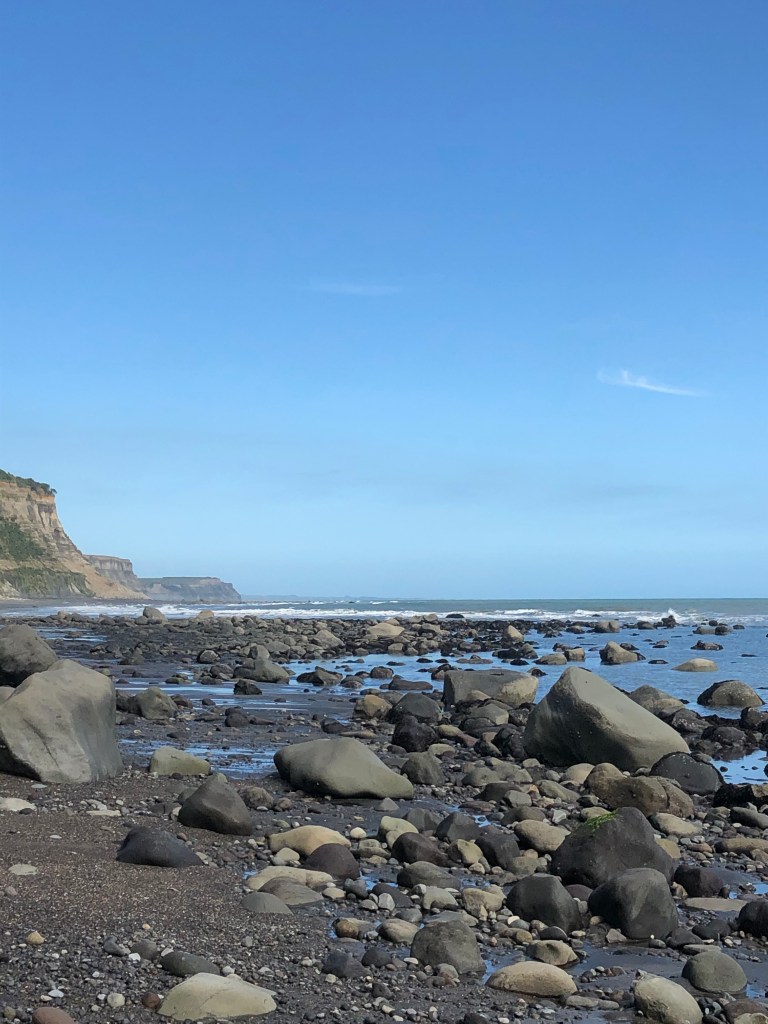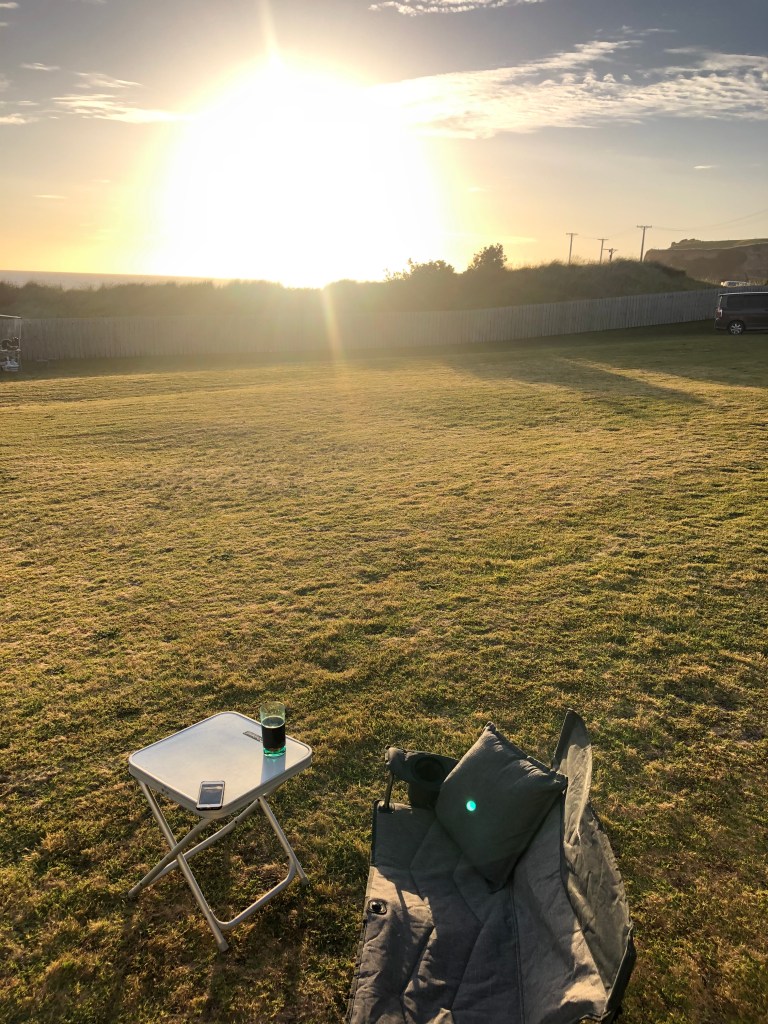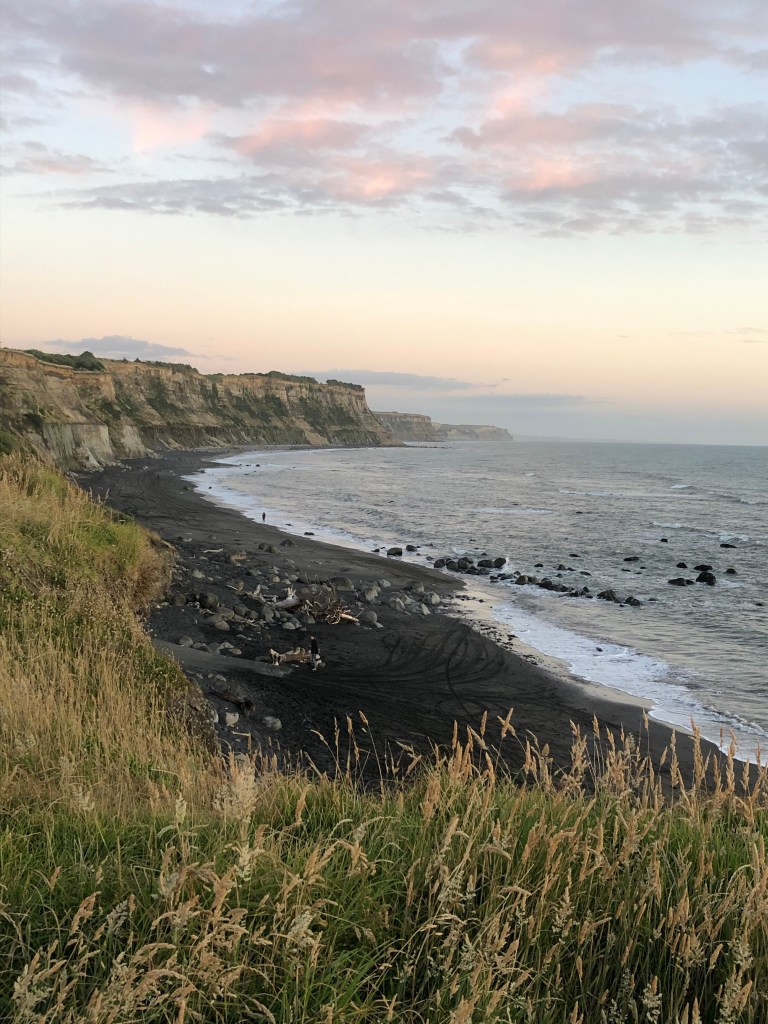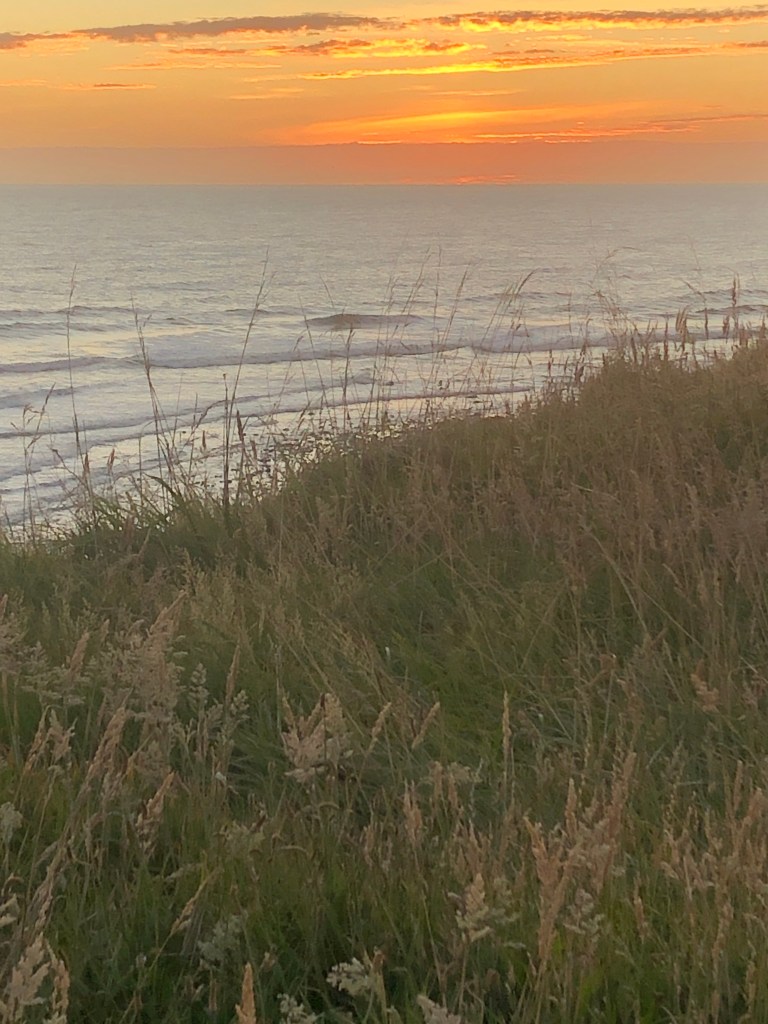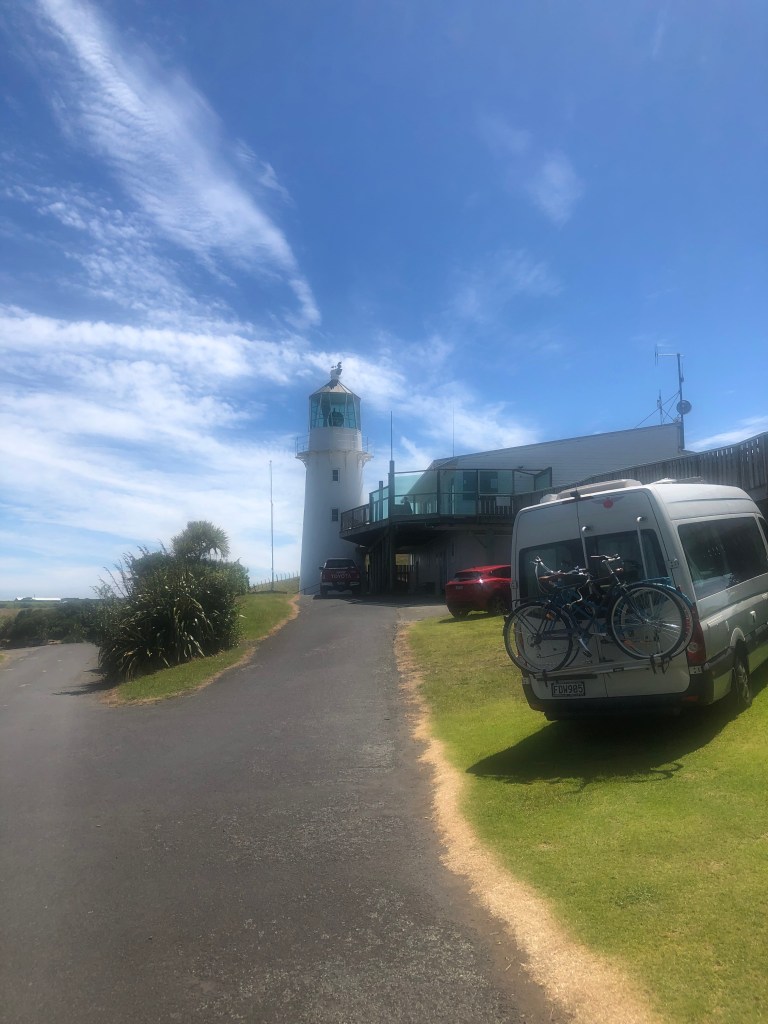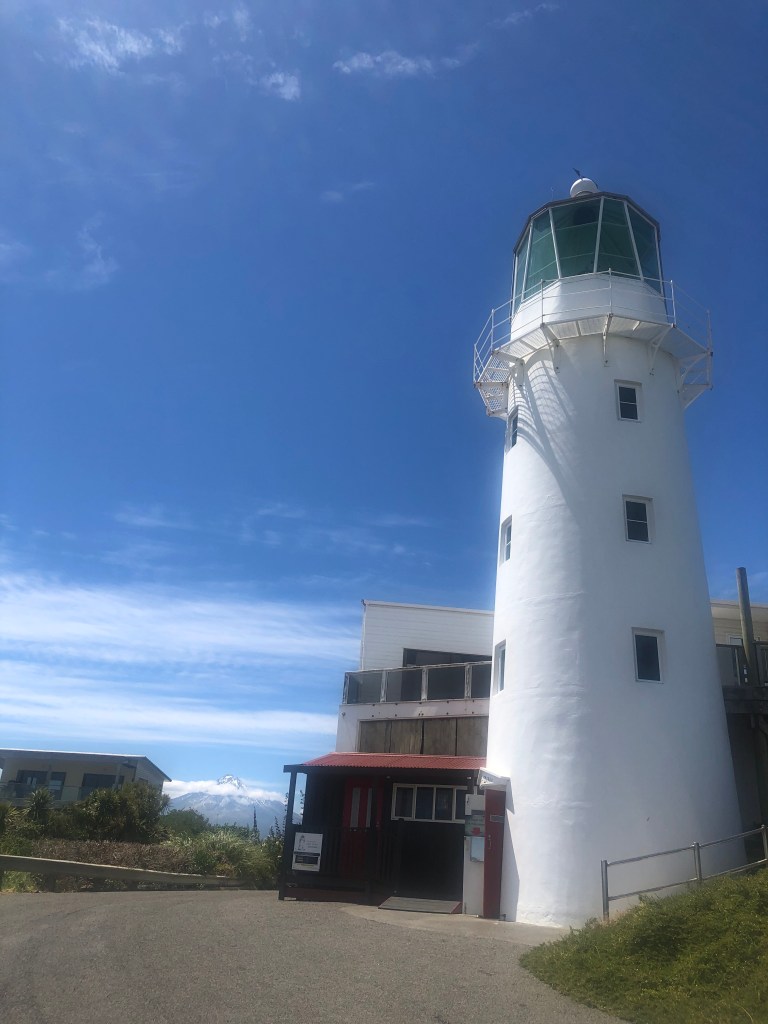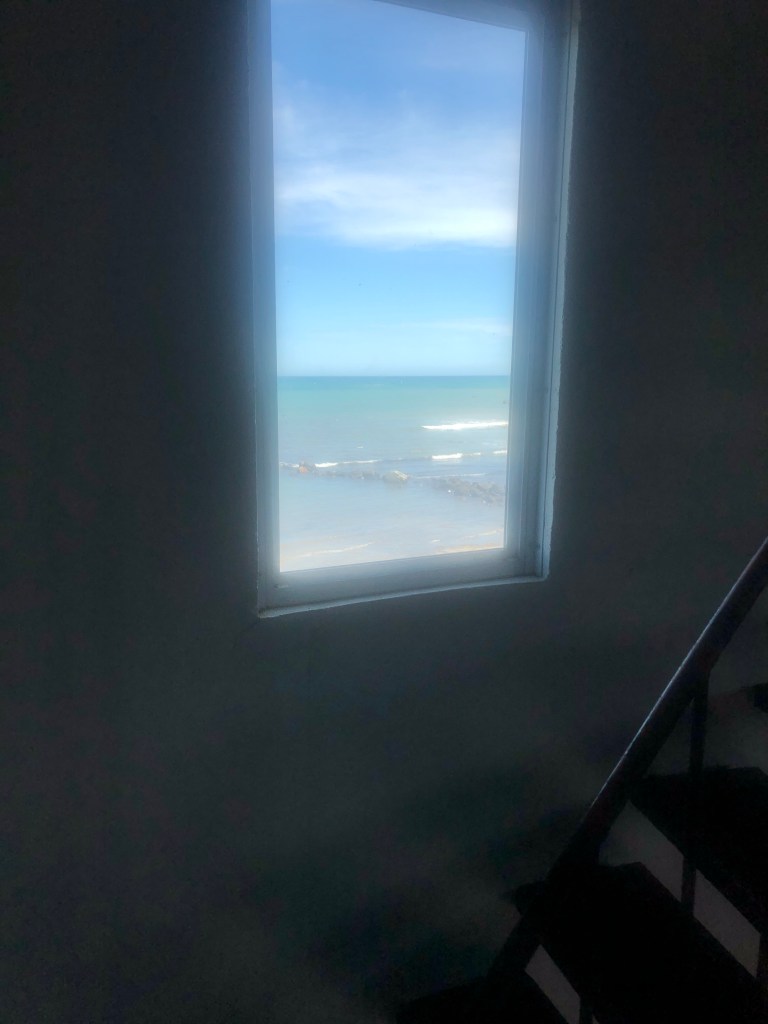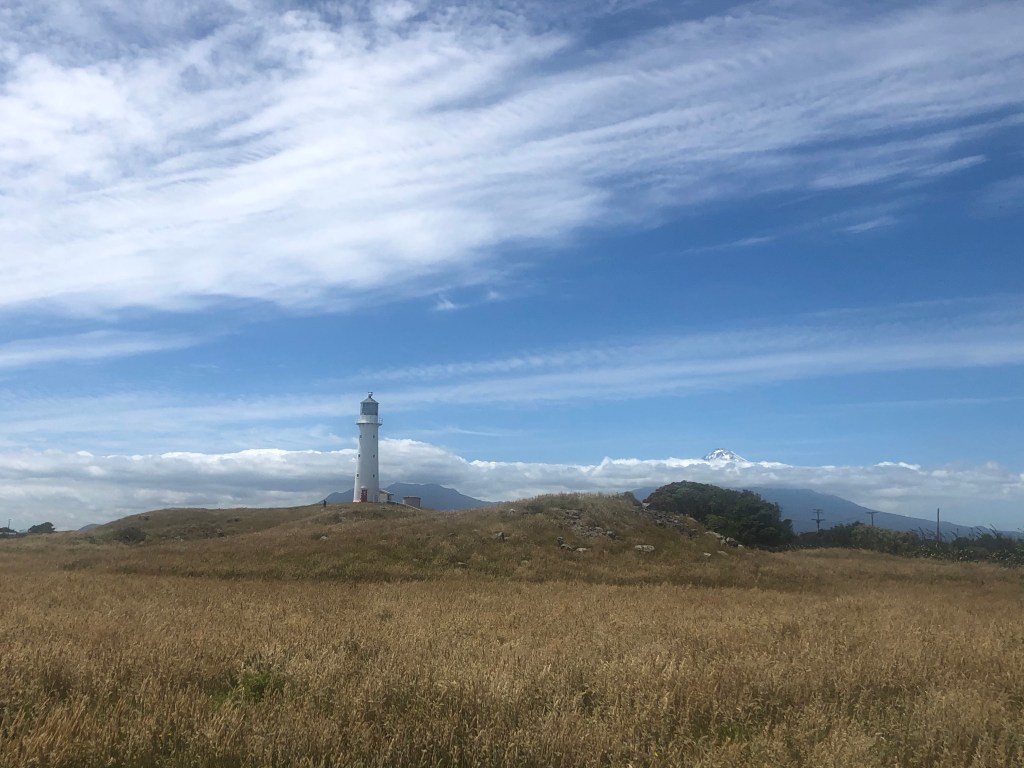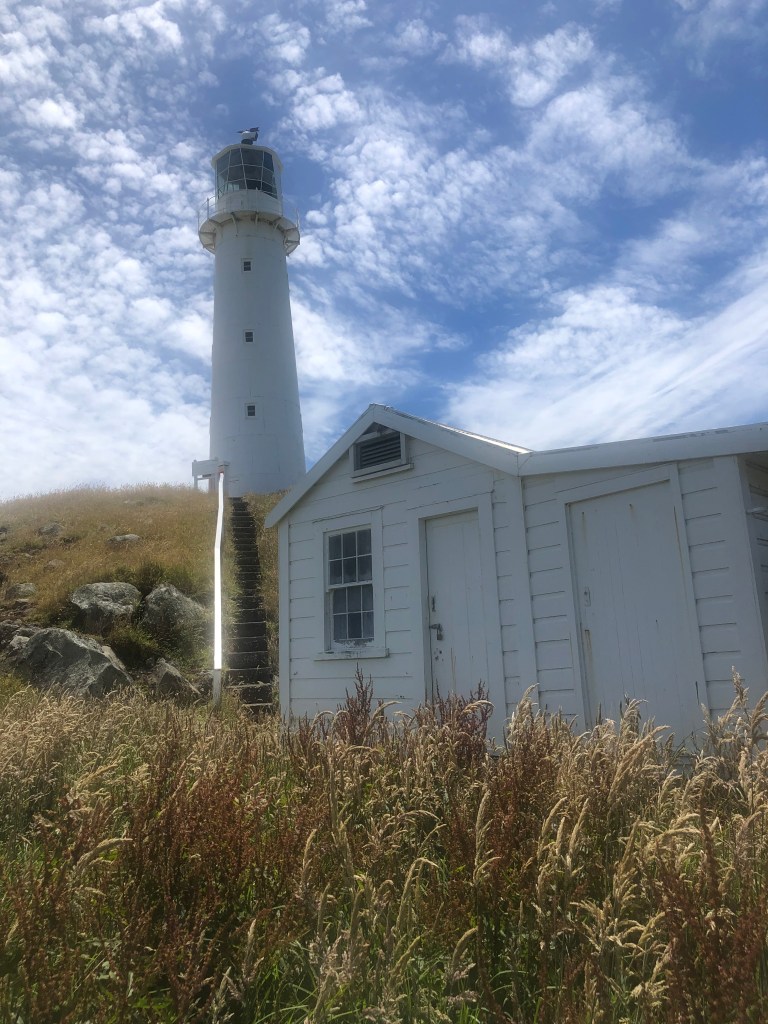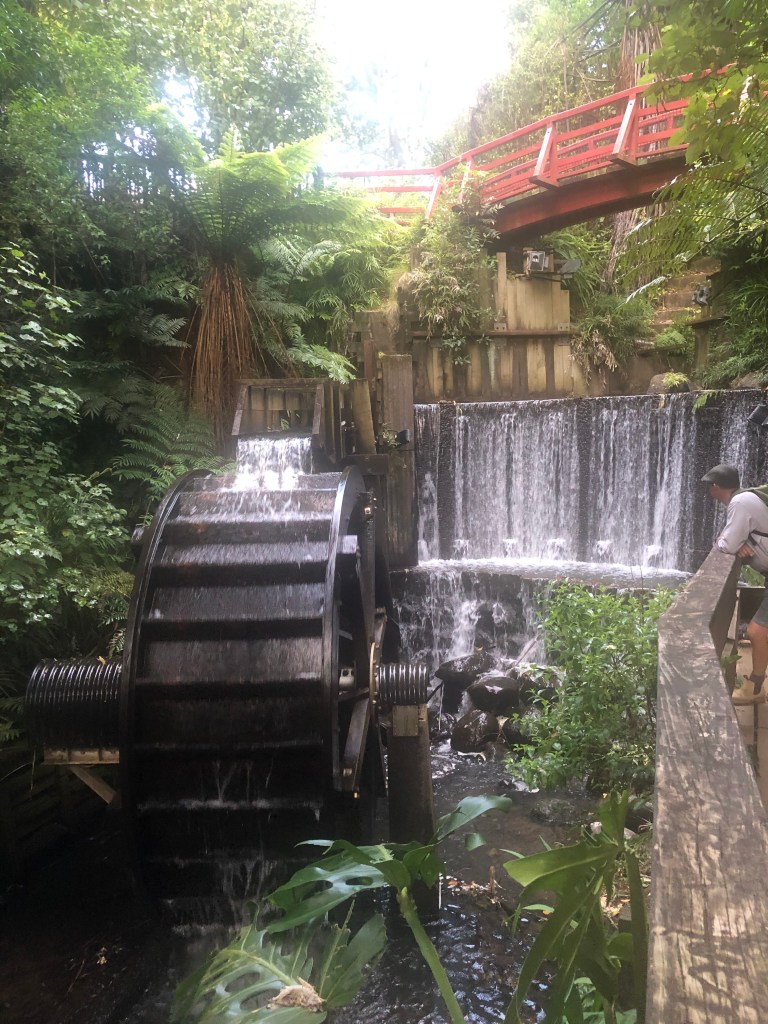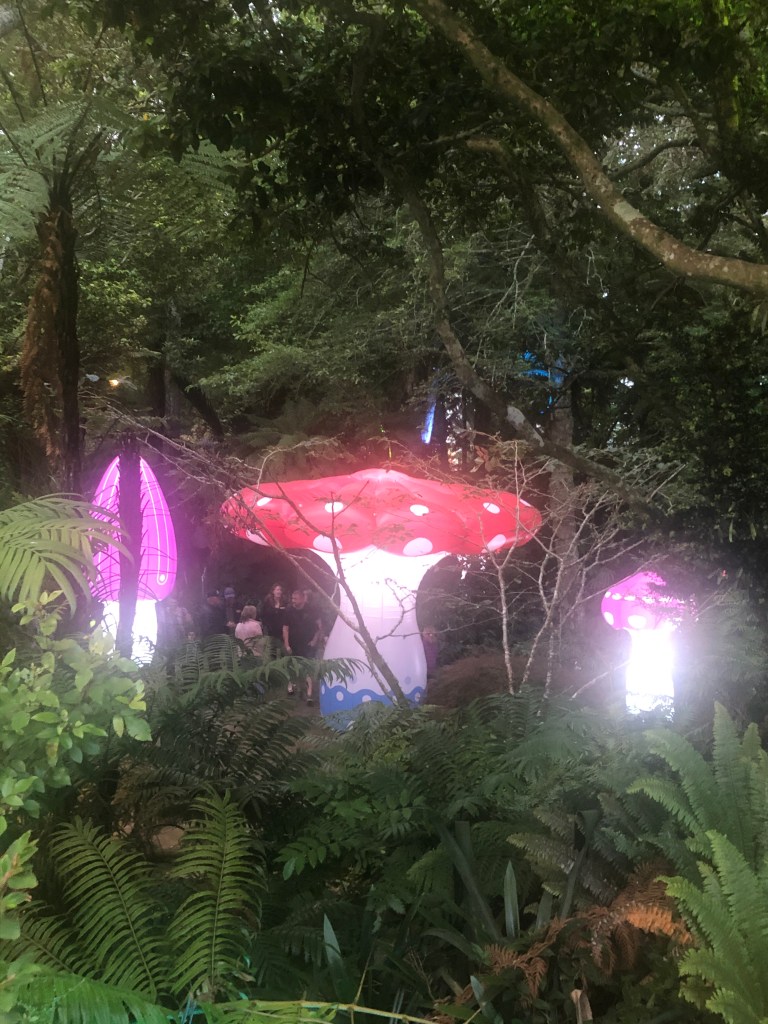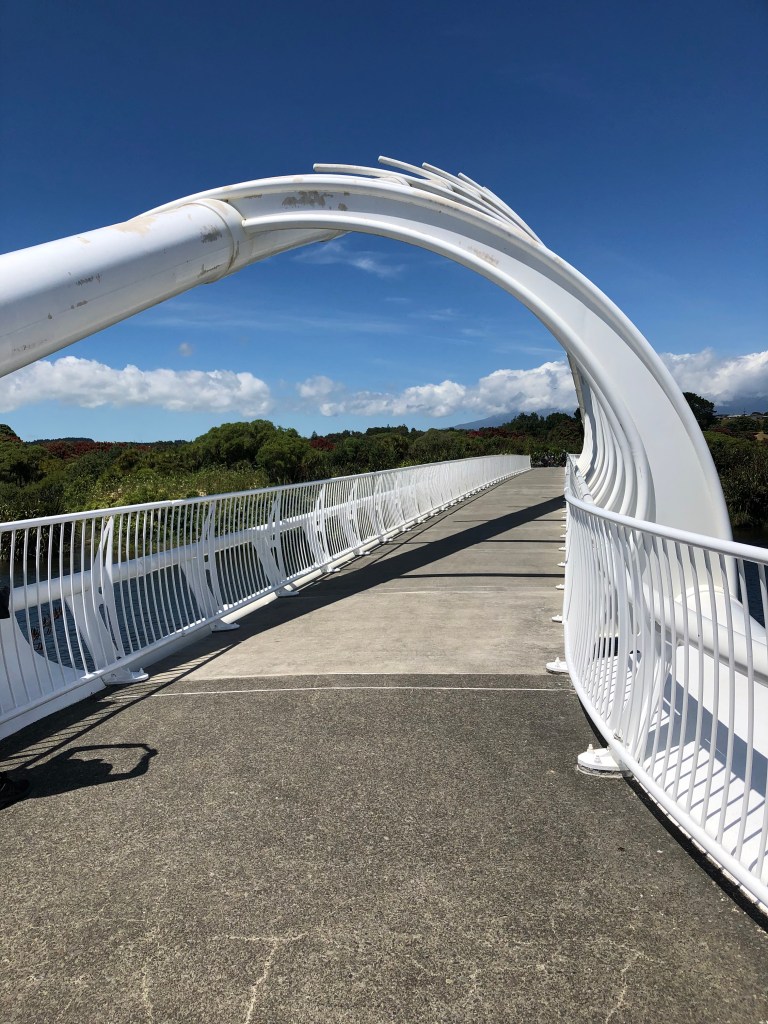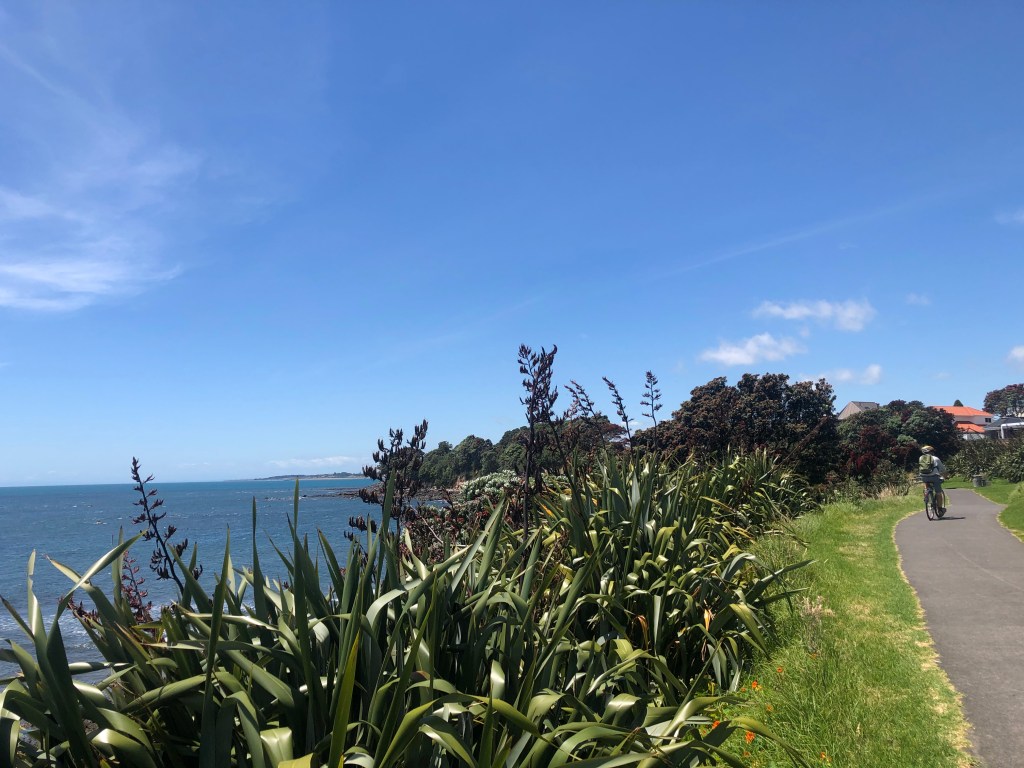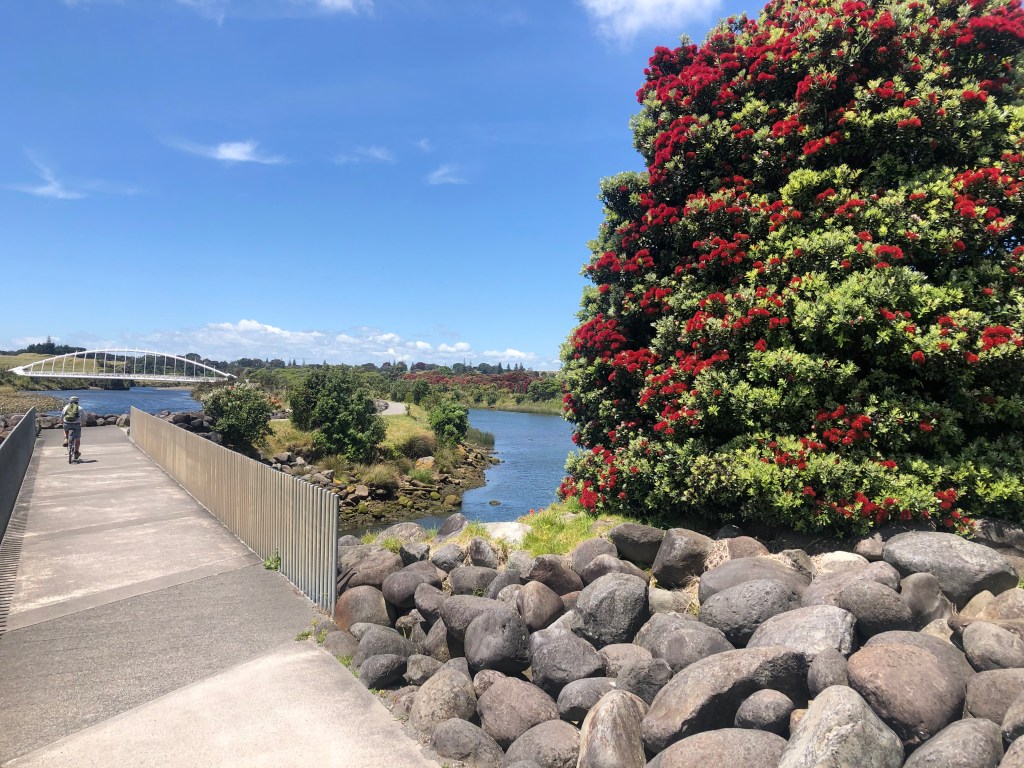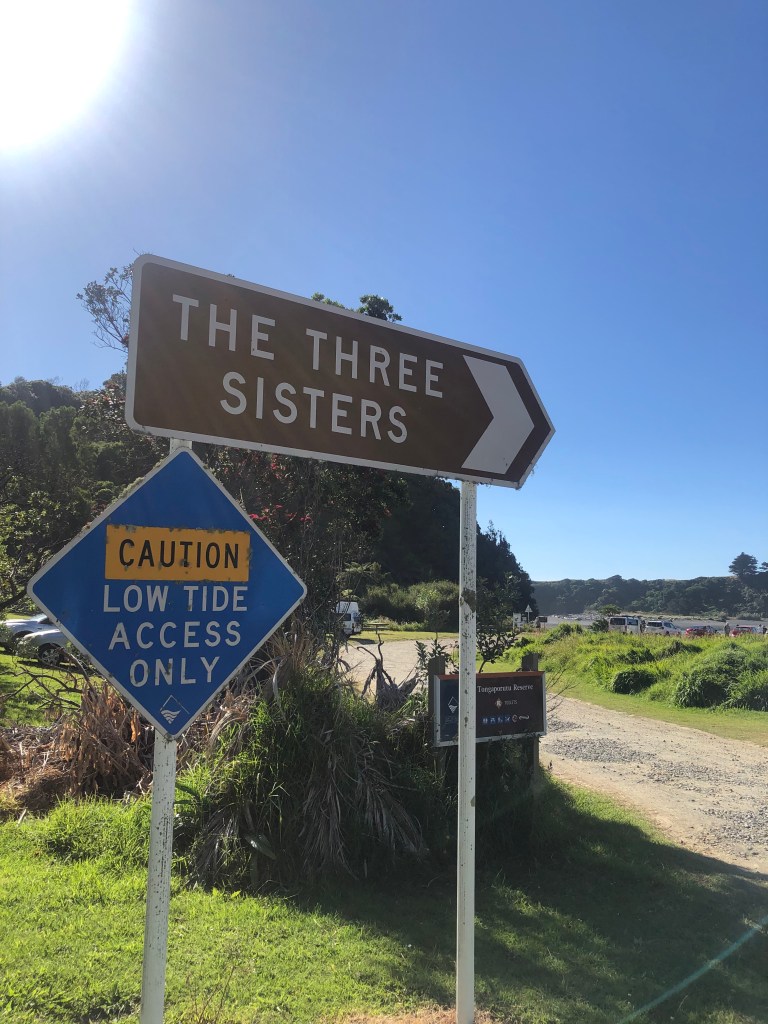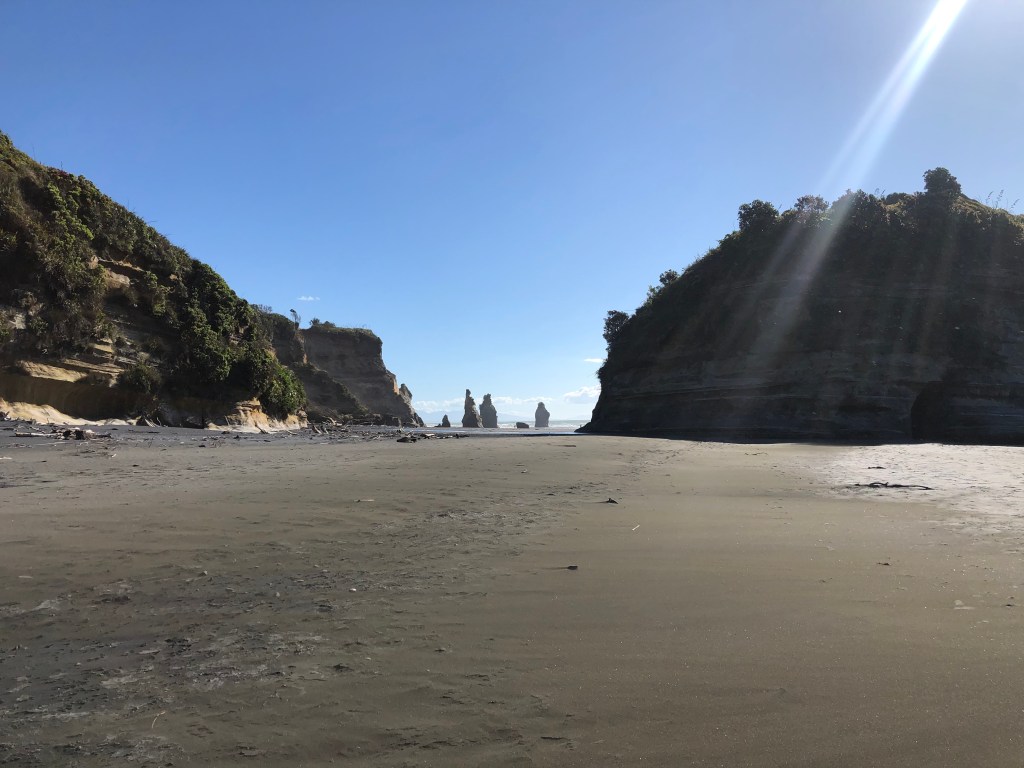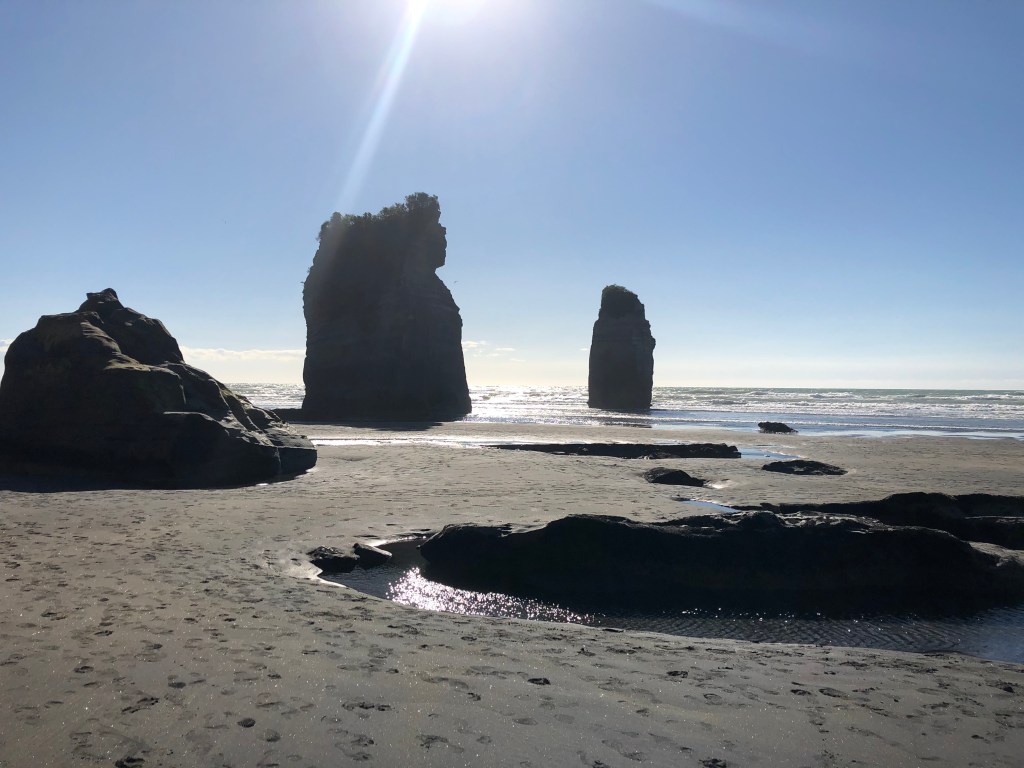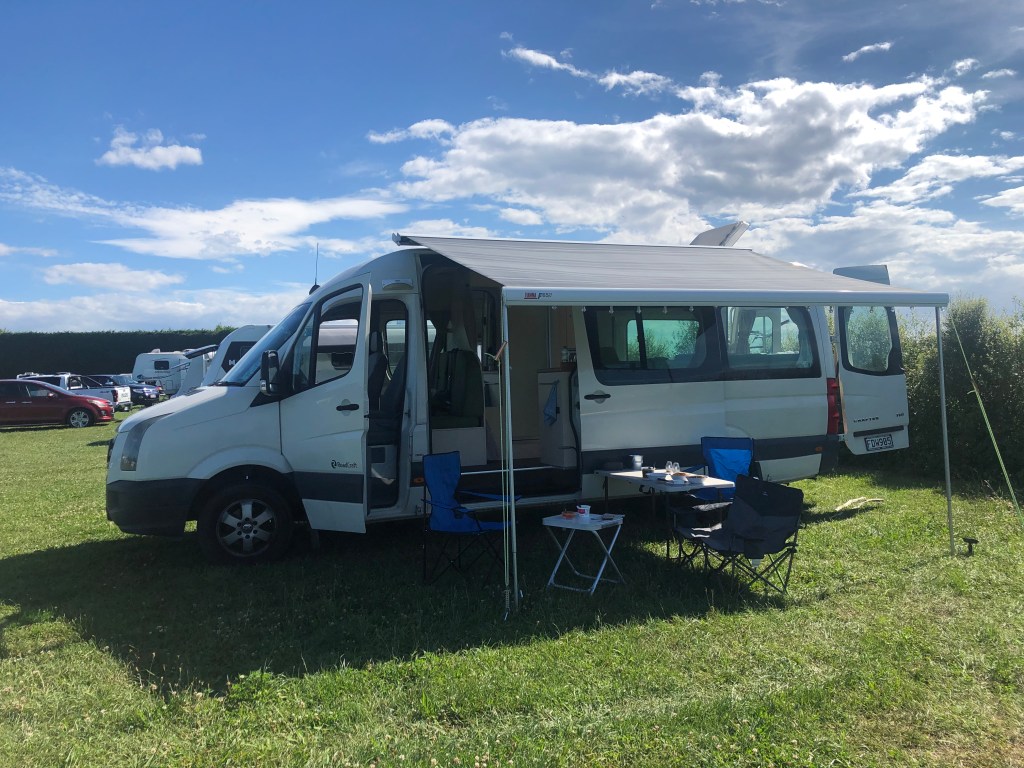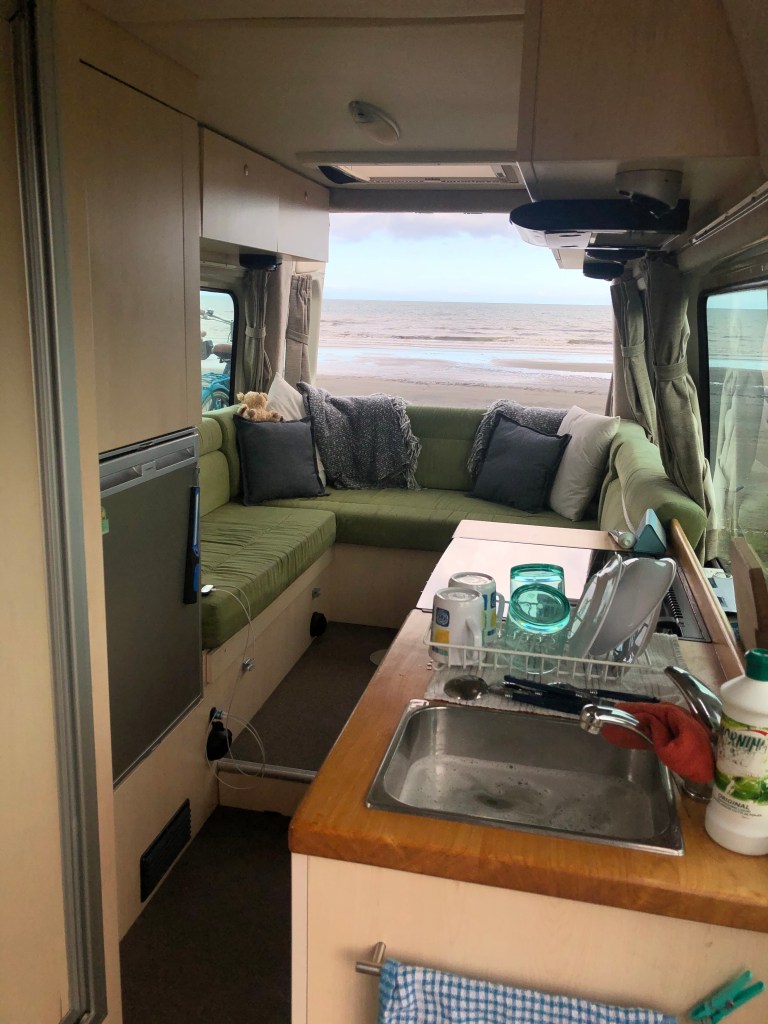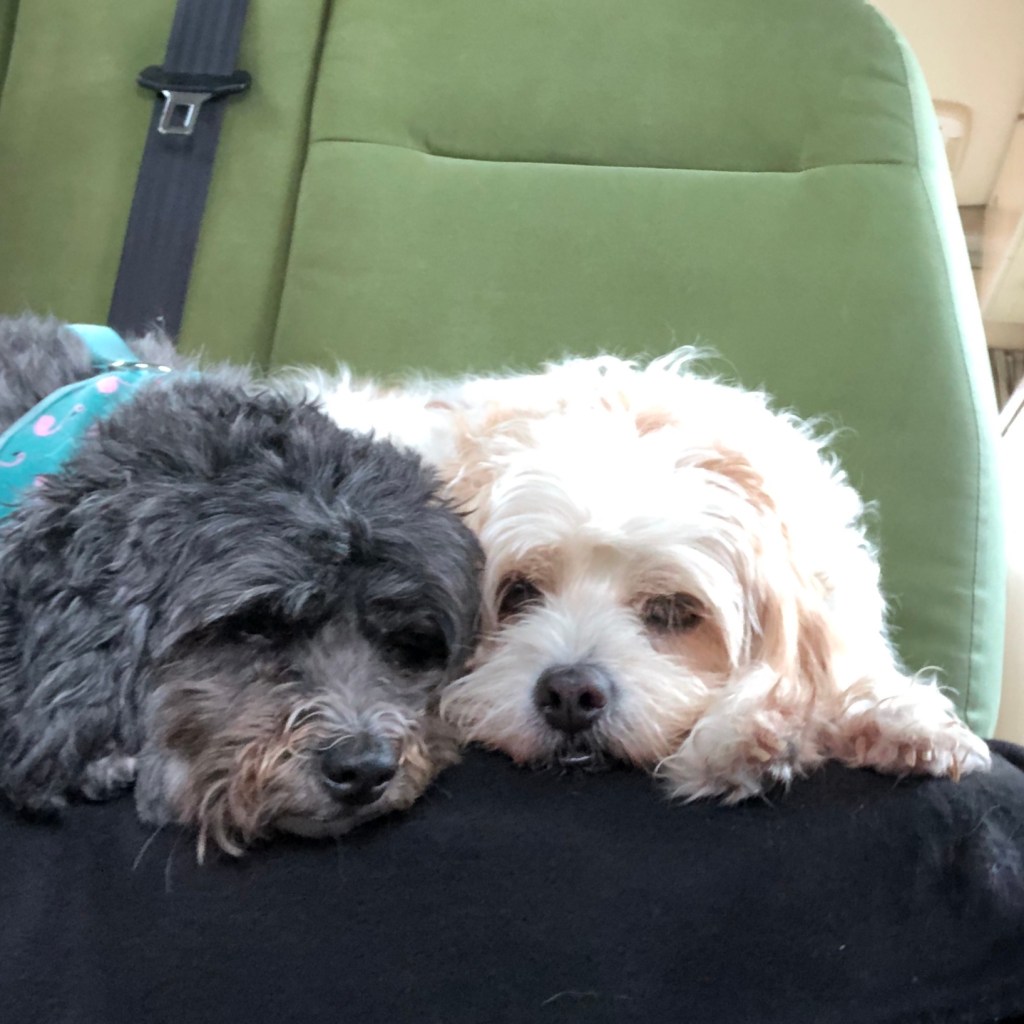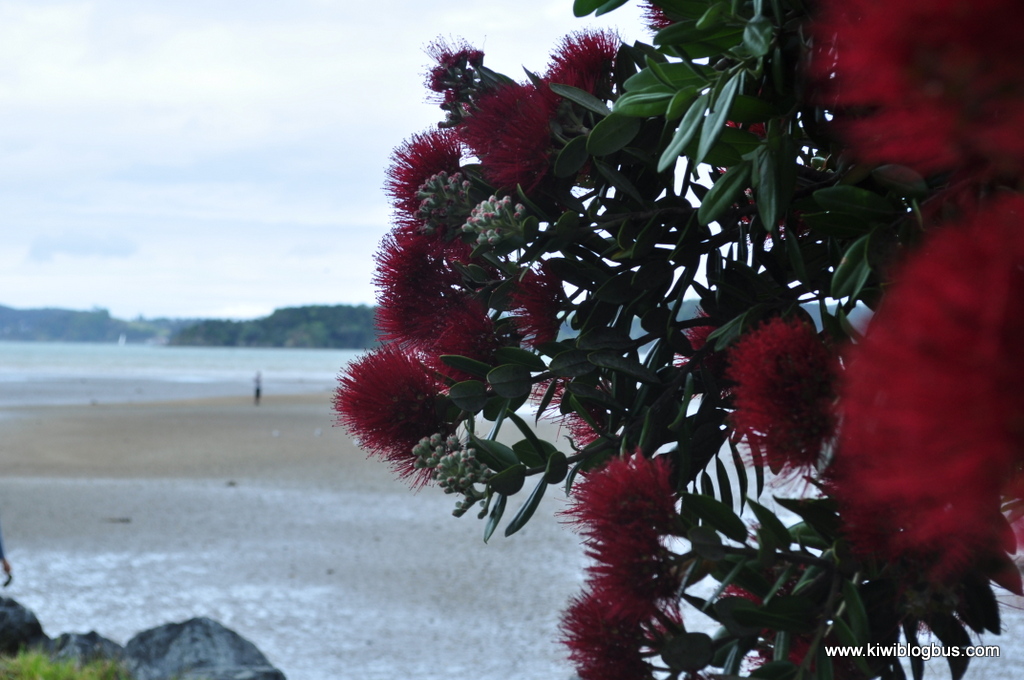A visit to Tawhiti Museum, Hawera

We visited Tawhiti Museum on New Year’s Day 2021 after spending NYE at nearby secluded spot; Ohawe Beach.
The hot summer days we’d had leading up to New Year’s Eve had been beautiful but it was also a nice relief to have a slightly overcast New Year’s Day – a more comfortable, less sticky day with a slight breeze – perhaps it was just me but I felt it gave a calming start to the New Year on a day when a few people probably needed to just kick back and recover!
We did a few errands in the town of Hawera, a lot of the larger stores were open and we were able to pick up some bits and pieces for the van. This was our first major trip away in this campervan and we were still figuring out what we needed or wanted to put into it. And then there are simply things that you forgot! So we picked up things like solar lights, citronella candles, a bluetooth speaker, gas BBQ lighter and some handy dandy double-sided velcro tape that we stapled to the inside of cupboards and use to keep our glass bottles in place. The velcro also works great as a curtain tie-back on the full-length curtain separator we put up behind the front seat. I’ll have to get some more interior photos for a future post about little jobs we’ve done in the van.
Anyway…. we had read about a super little museum on the outskirts of Hawera so we popped along for a quick visit while we were in the area. The little visit turned into a full afternoon! Tawhiti Museum is a tardis of a place with something to appeal to all tastes and between the hubbie and I we were happy to meander around slowly discovering the various exhibits – the only problem was we kept find *another* building, or we’d walk around a corner and find the little shed we entered had morphed into a huge hall!
I’m not complaining here – just pointing out that you might want to ensure you leave enough time for a good look around!
We paid the full entrance fee for the museum, including tickets for the bush railway and Traders & Whalers – a boat-based attraction within the museum grounds.


The museum is made up of several groups of buildings, all quite rustic and in keeping with the relaxed feel and character of the place. But before you think this is one of those dusty old shed museums with things just piled up or random old junk put on shelves… think again. Tawhiti Museum has an amazing and very well-presented array of interesting heritage items – from farm machinery to shipping to vintage toys, and wartime memorabilia to kitchen paraphanalia.
One of the things that helps bring the exhibits to life is the attention to detail and realistic figures used to set up various scenes. All the figurines, from the life-size right down to tiny scale models used in dioramas, are made on site in the ‘Body Shop’ which you can view as part of your visit.
The man behind the museum is ex-art teacher Nigel Ogle. Back in 1975 Nigel and his wife Teresa bought the 70-year-old Tawhiti Cheese Factory. Nigel started his small private collection as a hobby but it soon became the focus of public attention and the focus of an impressive visual history of South Taranaki. The museum is now an award-winning visitor attraction and a valued education facility.
We began our visit with a little trip on the Tawhiti Bush Railway, a 2’6″ gauge railway representing the logging railways that used to operate in Taranaki. The track has native planting and a range of buildings alongside the line, with life size figures highlighting how life used to be lived. The end of the track has a reconstructed sawmill set up with a range of historic displays explaining the old sawmilling and timber transportation days.

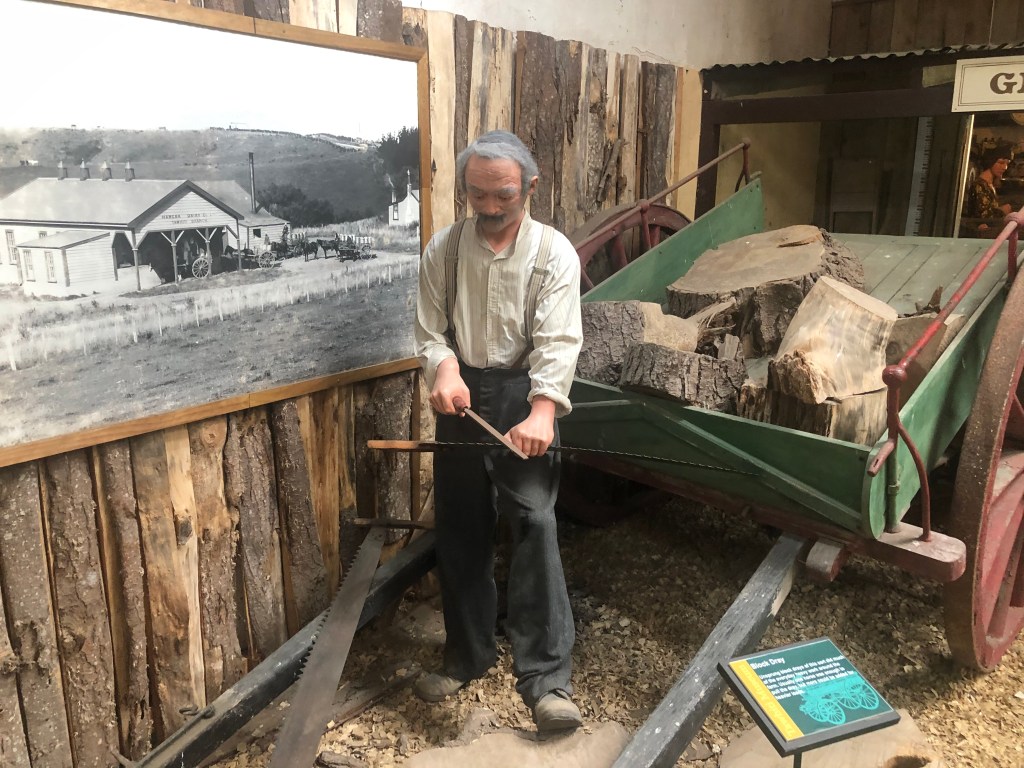
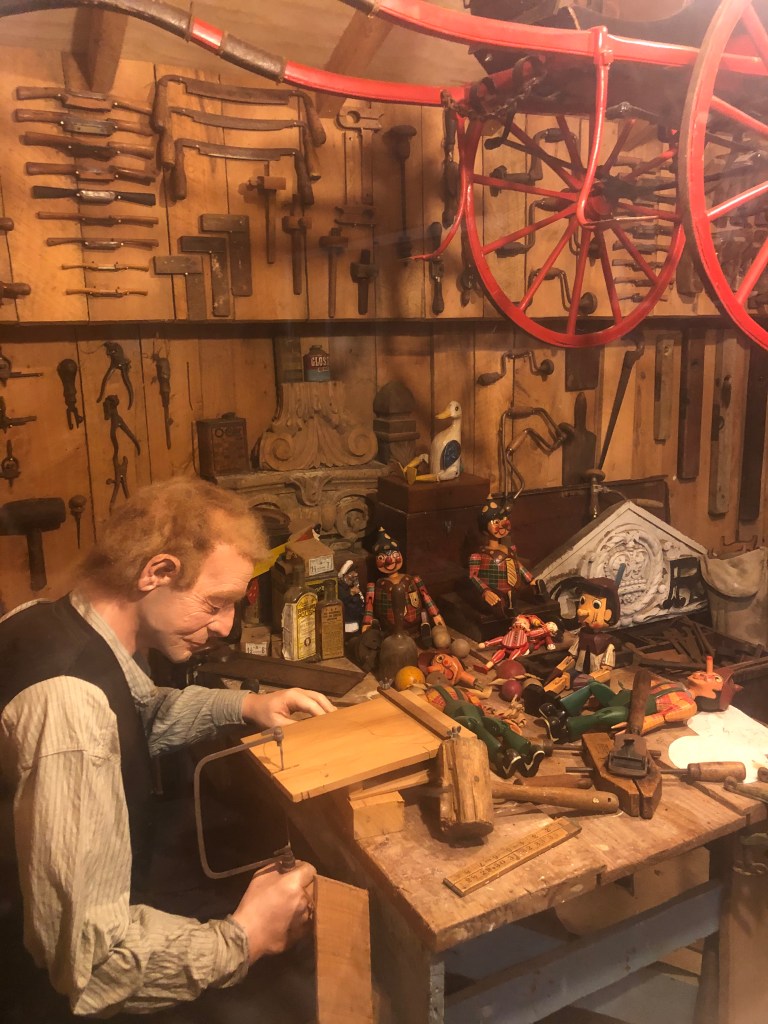


horse-drawn equipment to a powered machines of all types and sizes
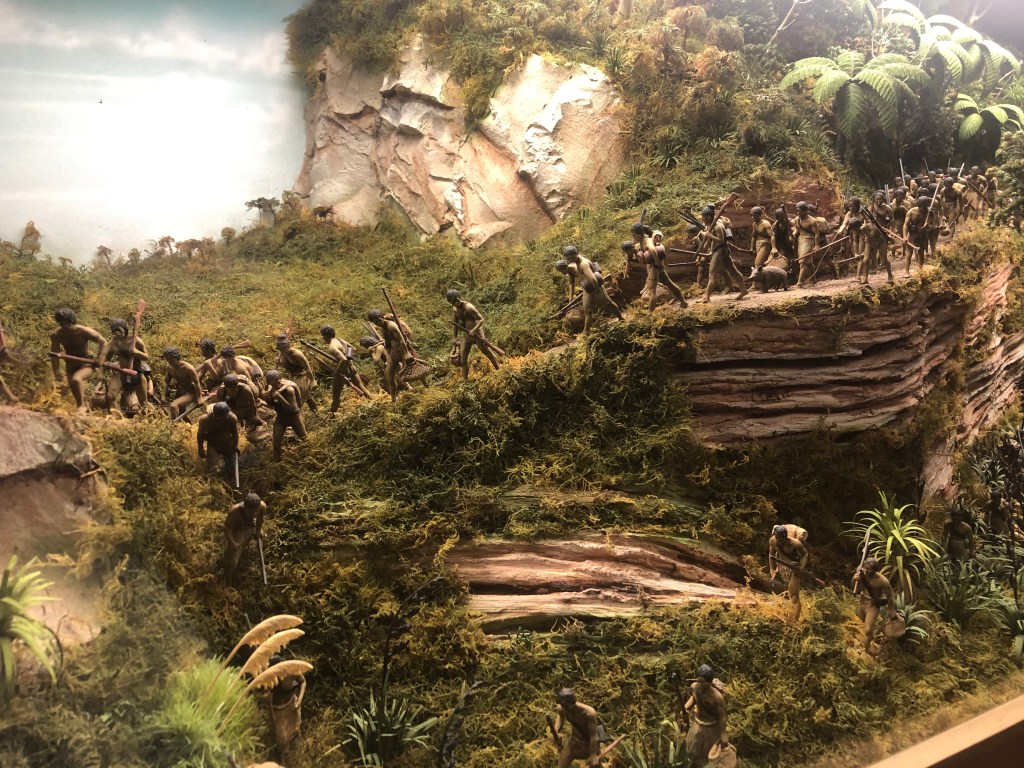
Traders & Whalers is set within Tawhiti Museum but does require an additional ticket to be purchased. The attraction is an innovative and historical representation of the Taranaki Coast in the 1820-1840 period. Visitors are whisked away in a boat to learn more about life in this time period as the boatman glides you past and through realistic life size scenes and sounds of the sailors and locals working, trading and battling. Photography isn’t permitted in the attraction but take at look at the video below which features the attraction.
The museum grounds also house a retail shop and a cafe, with plenty of parking and a dedicated area for campervans 🙂
I’ll leave you with this official video from Tawhiti Museum – and a recommend that you make time (plenty of time!) to visit one day!
Ohawe for New Year’s Eve
Ohawe is a small settlement on the South Taranaki coast, just 8km west of Hawera, and was the perfect, peaceful place for us to see out the year with a coastal sunset and great views of the rugged and stunning coastline.
Ohawe is one of New Zealand’s earliest settled places. The first people hunted moa and other birds here about 1300. It was later founded as a military settlement with two redoubts built, one either side of the river mouth. Many of the British and colonial troops who died in later battles are buried in Ohawe Military Cemetery.
Ohawe Beach is very popular with locals and visitors for its rock pools, swimming, surfing and fishing. However, the cliffs that run along the scenic beach are known to be very unstable with frequent rock slides and collapses so caution is needed at all times.
We enjoyed a peaceful and relaxing walk on the black sands at low tide. The shallow waters around the numerous rock pools were clear and warm – providing great areas for paddling and watching the numerous hermit crabs and other small sea creatures.
We had parked up for the evening at the local campsite. Ohawe Beach Camp is administered by the Rangatapu Pa Trustees with all income reinvested into maintaining the campsite and Rangatapu Pa. The site charges a very reasonable small fee per person to cover powered and non-powered sites and use of the facilities which while basic and ‘no frills’ were perfectly functional and clean and included toilets, showers, laundry and a camp kitchen with dining area and small lounge.
It’s a classic kiwi campground from days of old. And we loved it! No playgrounds or jumping pillows. No shop. No cellphone or internet signal. Just a pleasant grassed area on a slight slope with views out to sea and plenty of space for a game of cricket, frisbee or whatever non-digital game takes your fancy!
It was nice to have a range of fellow campers around us, from families in caravans and tents to other couples in campervans and some groups of friends who camped up together so they could have a merry old time bringing in the New Year together!
And when the sun started to set, a number of campers migrated from the site on the short stroll to the nearby clifftop vantage point to watch the sunset. We ambled over with our drinks in hand to farewell the last day of the year. And what a year 2020 was! After such times of angst, worry and uncertainty it was wonderfully calming to just stand and watch the final sunset of the year with others nearby raising a celebratory glass, or enjoying an evening picnic in the last glows of the day.
It was a perfectly peaceful
Midnight saw us tucked up in our bed watching the full moon light up the bay, listening to revellers in the village cheer in the New Year and then a few fireworks from the beach – feeling full of gratitude for this pretty and peaceful New Year’s Eve in this quiet scenic spot…. and…. having our lovely campervan to be able to come away to places like this!
Finally, we made it past New Plymouth…. Cape Egmont
After our night in New Plymouth to see the Festival of Lights we set off to explore the other coastal parts of Taranaki. On our previous visits to this region we have only ever got as far as New Plymouth and then either returned northward to the Waikato or once we had a hair-raising return trip via the internal Forgotten Highway road.
That was way back in our early days as kiwis, long before we had the bus or camper. We were travelling in a small people carrier with our 3 kids and my parents, so a total of 7 people and an old trailer to carry all our luggage. Needless to say, the car was cramped, stops had to be as often as possible – but then again not TOO often as it took so long to get everyone in and out of the car’s multiple layers of fold-down seats – and the luggage got dustier and dustier in the trailer. Then the trailer fell apart – well pretty much… the wheels had an issue with staying on, which is generally not very helpful. Yep – that was a memorable trip!
So back to our Taranaki ventures. It was New Year’s Eve and our plan was to travel around some of the South Taranaki coast and find a nice place to camp up and see in the New Year. One thing we’d spotted on the map that we were both keen to go and see was the historic Cape Egmont Lighthouse.
So yes, this is NOT Cape Egmont Lighthouse. It is a lighthouse that looks like the real one, and is just smidgen away from Cape Egmont itself – it’s the Historic Cape Light & Museum – built to house the original 1850’s lighthouse prismatic lens when the Cape Egmont lighthouse was updated with a modern rotating beacon in 1999.
For a small donation visitors can climb up the small replica lighthouse, with each floor providing interesting historical facts on the original lighthouse, early shipping in the region, plus an exhibit on a famous once-local resident; Lord Ernest Rutherford, whose family once ran a nearby flax mill. Rutherford was a New Zealand born scientist who became the father of nuclear physics when he was the first man to split the atom. He also discovered how to date the age of the Earth, invented the first nuclear detector, and his early experiments are said to have lead to the modern smoke detector. The region is obviously superbly proud of its links to this esteemed scientist and the museum provides an interesting display of his life and his family’s life in Taranaki.
Just a few kilometres along the coast from the lighthouse museum sits the real, actual and still working; Cape Egmont Lighthouse – standing proudly looking out over the coast with the ever-impressive Mt. Taranaki in the background.
The lighthouse was built in London and the segments shipped out to New Zealand in 1865. It was first erected on an island near Wellington but caused confusion to shipping as there was another lighthouse already working further down the coast. After dismantling and shipping to Taranaki the lighthouse became operation as Cape Egmont lighthouse in August 1881 when the light was lit to help ships to pass safely.
The cast-iron tower stands 20m high and 33m above sea level, perched on top of a prominent mound.
The 50watt lamp flashes once every 8 seconds and can be seen for 19 nautical miles (35 kilometres)
The light was first electrified in 1951 and the lighthouse keeper was transferred to another station due to staff shortages. In July 1956 the vessel Calm grounded off Cape Egmont during a gale. The keepers then returned to the lighthouse until it was fully automated in 1986.
The lighthouse competes to steal the show in its picturesque landscape which includes the backdrop of a volcanic mountain and some truly beautiful coastline. Although I’m sure in bad weather the lighthouse would win hands-down as a structure of strength and necessary function that’s stood here for 140 years to help nearby ships and vessels stay safe.
The next post will cover where we end up camping for New Year’s Eve.
Festival of Lights, New Plymouth
If you’re ever in New Plymouth around Christmas/New Year time then you MUST, absolutely must, visit the Festival of Lights.
We have been to the F.O.L. (TSB Festival of Lights) on several occasions. Held in the extensive grounds of Pukekura Park in New Plymouth the annual festival runs for around six weeks every December/January.
It’s completely free of charge to look around the fun and lively light installations that turn on every night from 8.30pm – 11pm. Plus the organisers put on a whole array of other entertainment throughout the festival, with musical performances, kids activities, an outdoor cinema, roller skating, food vans, and of course the popular row boats on the lake.
We discovered it several years ago and since then have made the trip back to New Plymouth JUST to see the lights and come home the next day! Now of course we have a campervan again it gives much more flexibility on taking a Taranaki trip 🙂
We had been parked up at the popular Lake Rotomanu but decided that was a little too far away from the CBD and Pukekura Park so we drove into New Plymouth to park up elsewhere. As members of the NZMCA (strongly recommend this) we discovered they had one of their wonderful Members’ Parks in New Plymouth so we headed over there to see if there was a space for our van.
The NZMCA Parks have a range of basic facilities, most do not have toilets etc as they are intended for self-contained campers, so you might find they just have fresh water and rubbish bins – which for the grand price of $3 pppn is an absolute bargain! We signed in and found a suitable spot amongst the other campers. We’d considered going straight to Pukekura Park in the camper and THEN going to try and find a campsite space but didn’t want to risk being left high and dry with no space at the inn once we left the festival later in the evening. What we hadn’t really considered, but will be taking action to prepare for now, is that once members have paid and secured a space at an NZMCA Park, you can then reserve your space and go back out in your vehicle – Excellent scheme!! There are a few rules and conditions around this including leaving a RESERVED sign and registering in the site book, so we will be sure to be set up and ready with our signs and traffic cones in the van for future use!
As it is, it was a fine evening and the site wasn’t *too* far from the Park so we decided to walk. It may also have been to help walk off some of these Christmas calories as we’d bought a few leftovers and goodies with us!
Here are a few pics from the Festival – I didn’t get one of each light installation but hopefully enough to whet your appetite!
Those interested in a bit of history might like to learn that the Festival of Lights came about in the main due to Queen Elizabeth II.
A fountain was installed in the park’s Fountain Lake in 1953 to commemorate the Queen”s coronation. Lights were also installed on Poet’s Bridge and around the Main Lake. Lights were added to the fountain two years later when the Queen and the Duke of Edinburgh visited New Plymouth.
Fast forward to 1970 and music and entertainment become a feature of the annual lights event and in 1993 it was officially named the Festival of Lights.
Coming up next.. ..our trip continues around South Taranaki and beyond.
New Plymouth Coastal Walkway
After our visit to the Three Sisters we had dinner and a nice evening in the camper. It was only our second night away in this campervan so we were still figuring out a few things, like… The Hubbie’s head gets cold overnight when we accidentally leave the back door semi-open. Ooops!
Next morning we also realised we’d forgotten to pack eggs for breakfast and had milk but no breakfast cereal. Hmmmm you’d never have thought we were once regulars at this campervan thing!
So we set off on the road relatively early to go to a supermarket before we breakfasted.
We drove about an hour to New Plymouth as this was our destination that day anyway. Once we’d bought some nice breakfast and other yummy groceries we needed to then find a nice spot to have brunch.
And we discovered Lake Rotomanu.
The PERFECT spot for brunch and many other activities.
The lake is a very popular area with locals for watersports, plus walks and cycle trails – including the Coastal Walkway which goes right past the scenic spot. There were a good number of families out enjoying the lake; swimming, boating, water skiing – plus lots of visitors setting off on walks or bike rides. There were also several campervans who were enjoying the small number of camping sites available there.
We parked up lakeside for a yummy brunch and then set off to explore the very handy Coastal Walkway on our bikes.
The Coastal Walkway stretches just over 13km from Port Taranaki to Bell Block Beach. We joined it at Te Rewa Rewa Bridge which not only is a very handy bridge crossing a river – funny that – but an extremely popular visitor attraction. The bridge was designed to represent both a breaking wave and a whale skeleton, and if you visit on a cloudless day you will see Mount Taranaki perfectly framed by the structure of the bridge.
I missed that one!
The Coastal Walkway itself is also a popular destination for many. There were LOTS of other cyclists, scooters, walkers, runners, dog walkers, swimmers cutting through to a nearby beach, and up near the port – quite a lot of boats (on trailers – not sailing down the walkway.. silly!). But we’re all a friendly bunch and there’s plenty of space for everyone. Regular signposts remind users to keep left, and cycle slowly through busy areas.
It’s a lovely path to cycle on and before we knew it we were in the centre of New Plymouth, near the Wind Wand. For those that don’t have a clue what that is… a short explanation is that it’s a pretty tall skinny sculpture made of fibreglass that stands vertically but bends in the wind. It is known by fans of kinetic sculptures around the world as one of NZ artist Len Lye‘s kinetic designs.
Apparently, it’s a pretty big deal with locals too. Some folks credit the Wind Wand with giving them good luck, from lotto wins to marriage proposals!
It was a superbly sunny and hot sunny day so we had a couple of handy ginger beers to quench our thirst along the way – isn’t that very “Famous Five go off on a bike ride”?!
We rode right along to the port end of the walkway, near Ngamotu Beach, we cycled down the pier/breakwater (super windy but lovely blue waters to keep watching for fish, seals or penguins) and where it does get a bit busy with parked cars, utes (pickups) and lots of boat trailers so we hopped back on the pathway to head back the way we’d come from.

There’s a lot more along the pathway that I didn’t capture a photo of so until I go again this will have to do.
It’s kind of tricky trying to take a photo while cycling but I’m getting better at not crashing into things while I do it! Or sometimes I just stop. My photos are often better when I do that 🙂
Back with more soon!
Three Sisters and no elephants at Tongaporutu
Our first overnight stay on our Summer Holiday was just over a two-hour drive from our Waikato home.
Tongaporutu.
A small coastal settlement in North Taranaki. It’s situated at the mouth of the Tongaporutu River and is probably best known for the nearby ‘Three Sisters’ rock formations. Once you’ve turned off the main state highway there is a small lane running parallel to the river, towards the sea, lined with an assortment of baches (cribs/holiday homes). It’s obviously a popular place with locals and holiday-makers who must come back year after year to chill out in their riverside homes, plenty of which were surrounded by boats and/or fishing rods, plus plenty of other beach paraphernalia.
We’ve driven past on every single trip we’ve done to New Plymouth, sometimes we stopover there for a rest break, toilet break, stretch your legs (or all the dog legs) break etc. We knew that there was an area where self contained campers were permitted to stay so it seemed like a good location enroute to New Plymouth and then southern Taranaki beaches, which I wanted to explore.
I think we were so excited to simply park up for our first night’s holiday in the van, crack open a drink and sit down and be pleased with ourselves, that I forgot for some time that the other big reason to go to this scenic spot was to go and see the Three Sisters. I quickly Googled the tide times as you are only supposed to walk around to the rock formations within a 1hr window either side of a low tide – and as luck would have it we’d just had a low tide when I checked the time. So newly poured drinks were quickly put aside (aka quickly downed) and we locked up the van and set off towards the river mouth/beach at a fairly brisk pace in case I’d got the times wrong! (There’s nothing quite like potentially being stranded overnight in a very damp place to make you walk quickly and with purpose!).
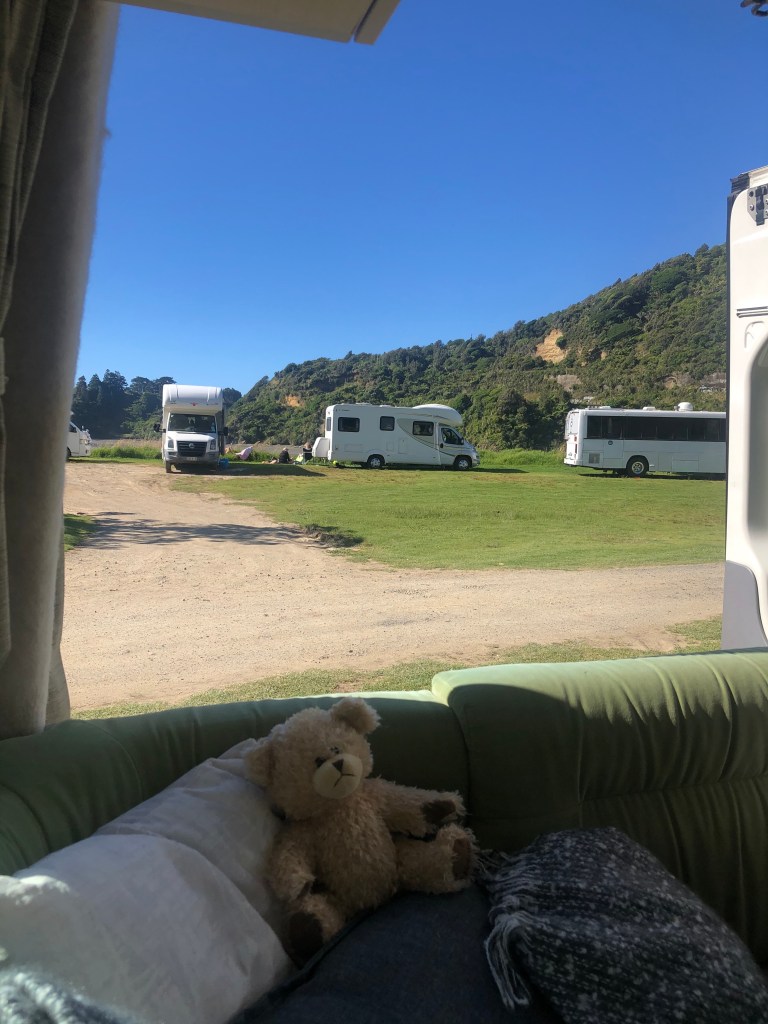

I really wish I had studied geology as rocks can sometimes be SO amazing and look full of history and interesting ‘stuff’! Along the side of the river were some pretty amazing cliffs, boulders, and rocky pavements.

(that probably has a much better scientific name!)
After following the rocky side of the river we came to the beach and kept left to go around the headland. If we’d had more time I would love to have also explored the other side of the beach as the north side of the rivermouth looked super cool and interesting too.
The first view of the Three Sister rock formations is quite stunning. Even at a distance it looks like you’ve stumbled across Narnia or some other such scene from a movie (as can actually quite often happen in New Zealand as lots of movies were filmed here!).
Here’s where I will refer to some interesting facts that I’ve read about the Three Sisters. The towering rocks ‘sisters’ have actually varied in number over the years – the Tasman Sea constantly errodes the rock and some of the towers shrink then disappear – however at the same time the rough tides are also making new formations from the cliffs. The original third sister was lost back in 2003, and the aptly named Elephant Rock which stood close by looking regal, rocky and elephant-y, lost its “trunk’ in 2016 and now no longer resembles a large grey mammal at all! You can see a photo of the original Three Sisters and the Elephant Rock here.

The scenes simply take your breath away. Nature in all its forceful wonders. There to touch (carefully!), walk around (and sometimes through) and just stare goggle-eyed at.. or maybe that’s just me!
The wind was super brisk as was our walking pace still as the tide crept ever closer. We didn’t hang around on the beach too long – although I imagine a sunset shot here on the west coast would be absolutely stunning – and made our way back to camp. The narrowest parts of the walk are where I think you could actually get stranded, on the side of the river, rather than actually on the beach – but we weren’t going to hang around to see if I was correct!
I absolutely recommend this walk to anyone. It was about 30/40 mins each way – and good footwear is recommended for the rocky shores.
We returned to the camper and may have poured another drink to celebrate our mini-adventure and the wonders we had seen.
A bit about NZ Summer Holidays
We both had a few weeks off work over the Christmas break (I can hear those in the USA gasping now!) so decided that was the best time to head off for our first proper trip in the van.
Obviously here in New Zealand, Christmas falls in our summertime. This has been quite a thing to get used to for us, coming from England which was mostly just cold and grey in December. There weren’t many classic movie-scene snowy Christmas Days in my memories – mostly just cold and grey!

mini meringues, fresh fruit, cream and chocolate flake! NOM NOM!
Here in NZ they tend to have a large (commercial) build-up to Christmas – as in most countries – but we find they do Christmas for just a day or two and then BAM… it’s summer holiday time!
A lot of local businesses close for the holidays. Not just for the statutory holidays or a few days either side, but close for the summer holidays. A couple of weeks, maybe more. We were amazed in our first few years here that the normally busy town we lived near simply emptied during January. Two, maybe three, days after Christmas and the streets were empty. Supermarkets were the busiest places and you could still park almost by the front door and bump into nobody whilst there! And if you needed any work done; a mechanic for your car, a sparky to wire in a new electrical thing, or any such kind of task – then you’re pretty much out of luck – unless you have a mate, who has a mate, who knows someone that has NOT gone away on holiday and can *maybe* get to you in a week or two.
Cars, trailers, boats, campervans and any other types of wheeled vehicle (this is New Zealand – you see things here you literally couldn’t imagine!) get loaded up for the big summer roadie. Tents and beach games are loaded into cars along with the average 2.4 children and a hairy dog or two. Surfboards and/or bikes are strapped to roof racks – trailers are hitched up, and the compulsory roadtrip snacks are put up the front to be handed out when the ‘are we there yet’ moans get loud or frequent.
I realise this scene could be repeated anywere around the world and you’re thinking this is nothing new. And it’s not. It’s just it still surprises me that it’s full on focus for Christmas for a month, or even more, and then as soon as we get Boxing Day over it appears that a large majority of the country whips the decorations down and disappears to the beach.. or the lake… or wherever their holiday spot is that year. And I love it!
And while I don’t really want to blog about that horrible C word I have to recognise that we are very VERY lucky here in NZ that we can currently freely travel and do all those fabulous summer holiday things that we want to do. All except get on a plane and fly to have a holiday somewhere else. But why would we want to when we have all of this amazing country to explore.
SO….
A few days after Christmas we disappeared on our summer holiday – in the campervan! Actually four days after Christmas in our household – and we didn’t rip the festive decorations down before we left as some of the family stayed at home and would have been quite upset by that move!
This was to be our first proper holiday in the van. Up to now The Hubbie and I had only managed to get one night away in it. So it was quite exciting to load it up and do a mini ‘moving-in’ session, finding out what would fit into all the cupboards and little storage spots etc. I was amazed by how much it actually did take. I filled two small lockers with my personal clothes (packing for all seasons as anyone sensible should always do in New Zealand!) and I didn’t get through half of them in the ten nights we were away!
The fridge also took more than I expected it to, along with the kitchen/pantry drawers, and then we still had a really large storage area underneath the rear seats – that we access via the rear doors – where we could throw outdoor seats, tables, bike helmets, BBQ etc.
Overall I was very impressed with how much stuff it held but at the same time we’re trying not to clutter it up with too many things that we’ll leave to mount up in there. We’d rather stick to doing a small pack-in every time we want to go away, just leaving absolute basics to live in there all the time.
Once loaded up, included our two bikes on the bike rack, we filled up the fresh water tank and set off.
Our camper has a pretty large solar panel and house battery set up (please don’t ask me what size in term of watts or whatever technical lingo is appropriate – I have no idea!) which means we don’t need to stay on a campsite with power to hook up to. Yay!
And one of the best things about campervanning in NZ is the huge number of motorhome-friendly towns, villages, businesses, pubs, tourist attractions etc. that have dedicated spaces for motorhome overnight parking.
Important to note here is that in the majority of cases, vans need to be fully self-contained to be able to stay in a lot of these ‘freedom camping’ spots. This is all done via the New Zealand Motor Caravan Association – the NZMCA. For a vehicle to be officially approved as self-contained it is physically checked to ensure it complies with the Association’s requirements to meet the ‘ablutionary and sanitary needs of the occupants for a minimum of three days without requiring any external services or discharging waste’.
I won’t harp on too much now about self-contained vehicles. I’ve posted about Freedom Camping in NZ in the past, and even though it was way back in 2012 I don’t think much has changed since I wrote: The Good, the Bad and The Ugly about Freedom Camping

enjoying a beautiful riverside spot at Tongaporutu
I’ll leave it there for today but here’s a taster of what’s to come soon; our ten-night break took us the following overnight camping spots and some amazing nearby adventures in each destination – all to be blogged about very soon!
- Tongaporutu / Three Sisters
- New Plymouth
- Ohawe Beach, South Taranaki
- Whanganui – site 1
- Whanganui – site 2
- Kapiti Coast
- Putangirua / Cape Palliser
- Castlepoint
- Napier
- Taupo
Hi Honey! I’m home!
Here we are – back in the land of blogging again, who’d have thought it.
But here we are in January 2021 (we’ll just gloss over 2020 for now – eek!) and the blog is back up and running because… we have bought a new campervan 🙂
This beautiful thing came into our lives last October….

We (the royal we that is The Hubbie and myself) decided it was about time to get back into the campervan lifestyle again – especially seeing as we currently CAN travel around New Zealand and currently CANNOT travel to…. anywhere else!
The bus we used to own was obviously a reasonably large vehicle so I wanted something a little more compact (this van actually isn’t *that* much shorter – but definitely feels smaller), I was keen to find something with a rear lounge and back doors/windows, and something newer with more up to date facilities (such as solar panels, and air con in the cab), plus a few other preferences and upgrades from the bus.
We found a preloved 2/3 berth (more on that later) VW Crafter – all officially self-contained (a big requirement here in New Zealand so you can freedom camp or park at low cost in many amazing locations) with a very handy two-bike rack on the back door, a large solar panel, two house batteries, and just enough of everything else we were looking for to make us say, “We’ll take it”.
The Hubbie and I both currently have fairly busy work lives so during the first three months of ownership we only managed a grand total of ONE night away together! I did get to use it on another occasion with the teenage daughter – which was a great opportunity to see if I could drive and manage it by myself… and I can! So if our promise to get away together at least once a month doesn’t happen – I can just disappear for some campervan ‘me’ time if I need to!
However our intentions are good and solid – we bought the van to use it and both intend to make that happen as regularly as possible. In fact, we’ve only just returned from a nice 10-day break over the New Year which I’ll be blogging about soon.
So that’s it… we’re back in the world of campervanning again and how could I not turn back to my trusty Kiwi Blog Bus blog to share some of our tales, photos and adventures from time on the road. New Zealand has a seemingly endless supply of amazing destinations to visit and our intention is to discover them! The blog will bring you more details on campervan life too, and I’m sure include some pics and tales of these two pests….
See you again very soon – and do write and let me know if you have any questions, comments or ideas about what you’d like to see on the Kiwi Blog Bus part II.
Hello again

So SO many apologies are owed to my long time committed readers of this blog.
I abandoned you.
I’m sorry.
The belated news is that just over a year ago we actually sold the Kiwi Blog Bus 😦
We were all sad to see it go after having many happy holiday around New Zealand and enjoyed the wonderful convenience of travelling in a bus / campervan.
However – we were still travelling, but in another direction.
We moved to a lifestyle block.
We are the very proud owners of a tiny two bedroom cottage on an acre and a bit of prime NZ land.
Slowly but surely, aided by funds from the sale of the Blog Bus, we are doing up our do-er upper with the addition of some KiwiAnnison favourites: a huge veggie garden, a tractor shed (full of tractors!), a paddock for the miniature horse, a field full of Christmas trees and chooks… etc….
So for all those that may be interested in following the tales of our “Kiwi Good Life” – you can now do so via the new blog I have started 🙂
And for Kiwi Blog Bus fans – I may still dip in here and write up a few travel stories from the good old bus days, or just general NZ travel tales I think you may just be interested in.
I won’t finish with a goodbye as hopefully this is the recommencement of something that lots of you will stick by my side on.
See you soon
Vicki
Finally….. the beautiful Bay of Islands
Since we came to live in New Zealand, and probably even before, I heard so much about the Bay of Islands that it obviously had to go onto our Must-See list (and my personal bucket list).
So on our first trip ever up to Northland and the Far North (is that the opposite of the Deep South?!) I was eagerly anticipating our arrival in the Bay of Islands.
It did not disappoint.



